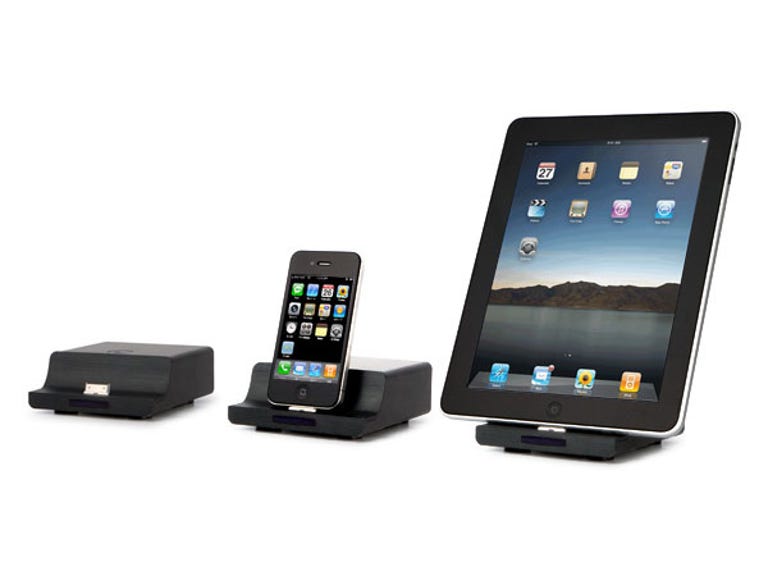 Why You Can Trust CNET
Why You Can Trust CNET Cambridge Audio iD100 review: Cambridge Audio iD100
The Cambridge Audio iD100 is a great little iPad-compatible digital audio dock that boasts a solid build and great sound when mated with a suitable decoder.
Apple's iPad has been on the market now for 12 months, and even with the amount of advance notice we had — through rumours, patent applications and so on — it still seemed to take the industry by surprise.
The Good
The Bad
The Bottom Line
While we saw our first standalone iPad dock in December, it's taken a little while longer for docks to appear that you can connect to your hi-fi system. The Cambridge Audio iD100 is the first we've seen.
Unlike other docks you might have seen, the iD100 is a purely digital device so you'll need either a home cinema receiver or an external DAC to get any sound out of it. Of course, Cambridge Audio suggests connecting this directly to its own DacMagic device.
The iD100 features quite a solid build, with the highlight being the thick, curved slab of brushed aluminium at the front. The dock is available in either black or silver, and includes a set of blue activity lights on the front lip, but they're not bright enough to drive you to distraction like some other LEDs.
Cambridge Audio bundles a series of rubber pads to ensure a tighter fit for your device, but if you use a case they may not fit properly. Using the dock without the pads worked just as well.
The back of the device features a number of exotic connections along with component video, and this helps set it apart from other high-end docks like the Wadia 170i Transport and the Onkyo ND-S1. The iD100's most unusual connection is the AES/EBU XLR out — a professional-level port and not usually seen on consumer equipment. Other connections include a digital optical and digital coaxial connector, USB (for iTunes synching) and a proprietary 3.5mm video-out that's switchable between composite, S-Video and component.
The deck comes with a large "card"-style remote control with a coin battery. While the remote will also give you some control of Cambridge Audio amps it doesn't give you much scope for iPod control as there's no on-screen display via the video connection. Pressing Menu, for example, simply brings up the contextual menu on the device itself, which is more useful on an iPad than on an iPhone when viewed from the couch.
Now to the tricky bit: how do you test a completely digital iPod dock? Bits are bits, right? Sound quality will depend more on the DAC or home theatre receiver you plug the dock into — here we used the Arcam rDAC as well as the Cambridge Audio DacMagic, and both sounded great.
Video quality is something we could more accurately gauge, though, and outputting Dr Horrible's Sing-Along Blog to a Panasonic G10 looked great with more picture detail than the composite-only Zeppelin Air could manage.
The only potential sticking point here is the price. If you're looking for an analog dock that will also charge your iDevice, you can get them for under AU$100. But this dock is different — it's designed to be used with a high-quality DAC, which means it will not only sound better but look great, too. It's also cheaper than all of the other high-end options we've seen to date. If a digital-output dock is what you're looking for, then the Cambridge Audio iD100 is currently the best on offer.


